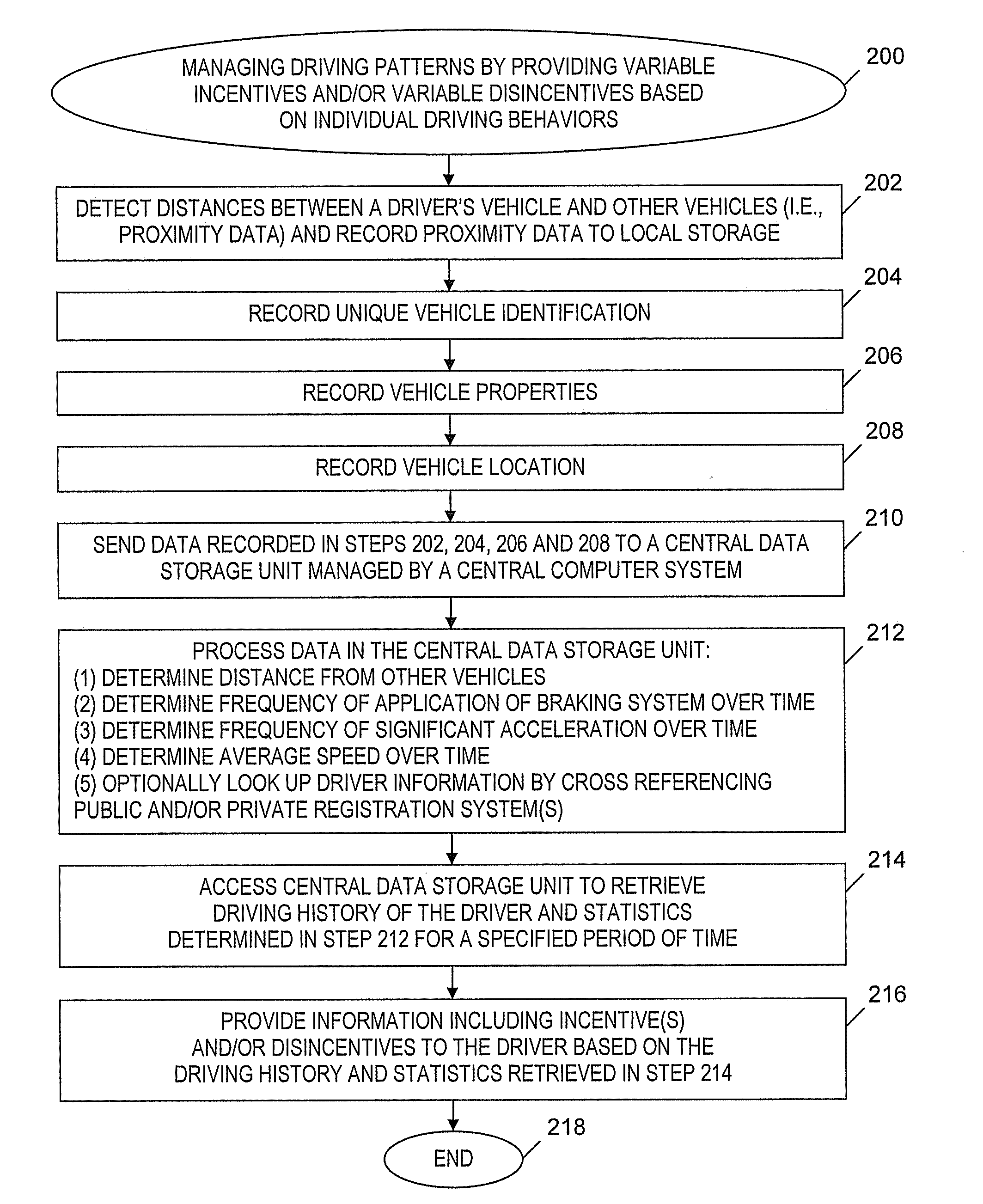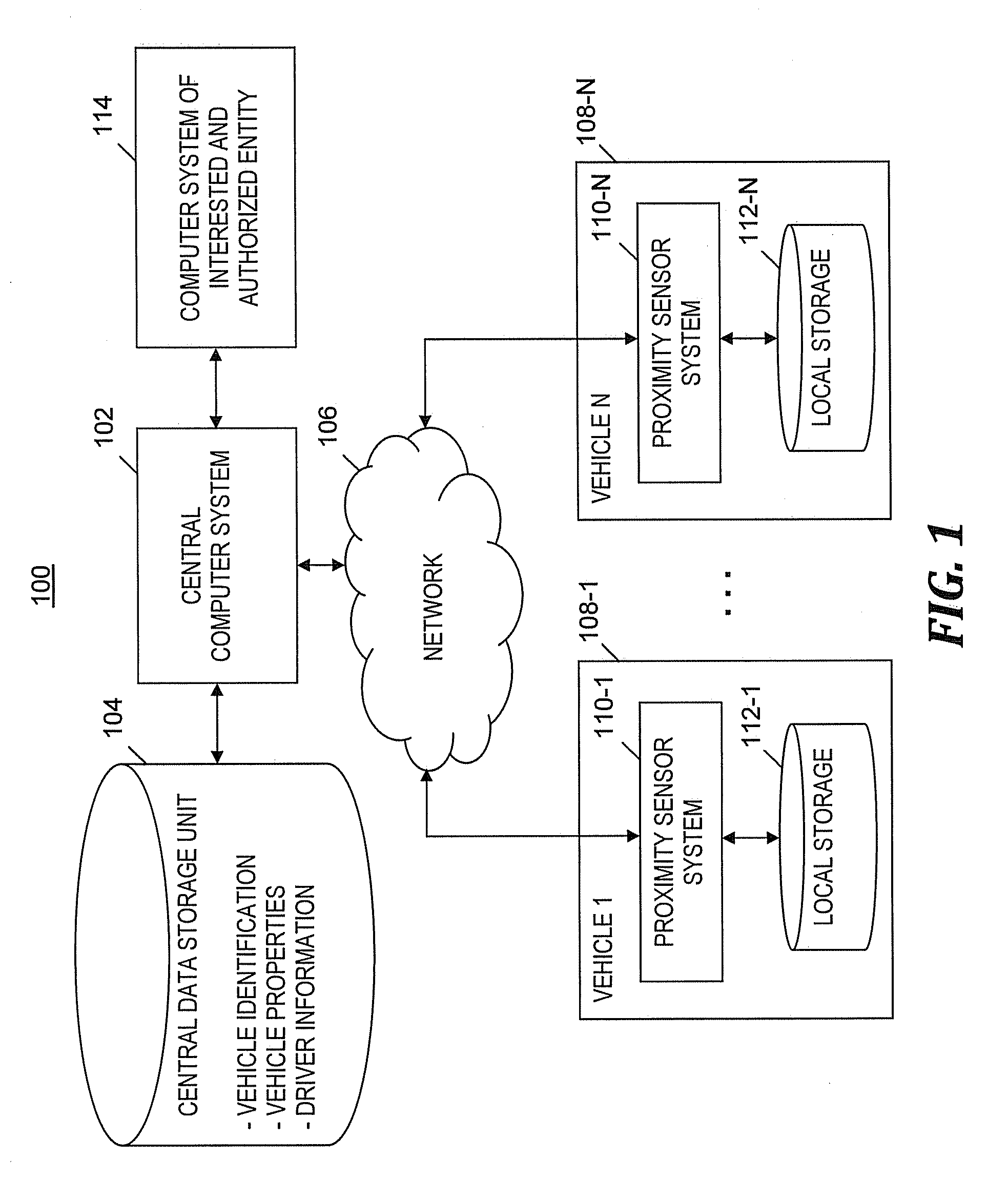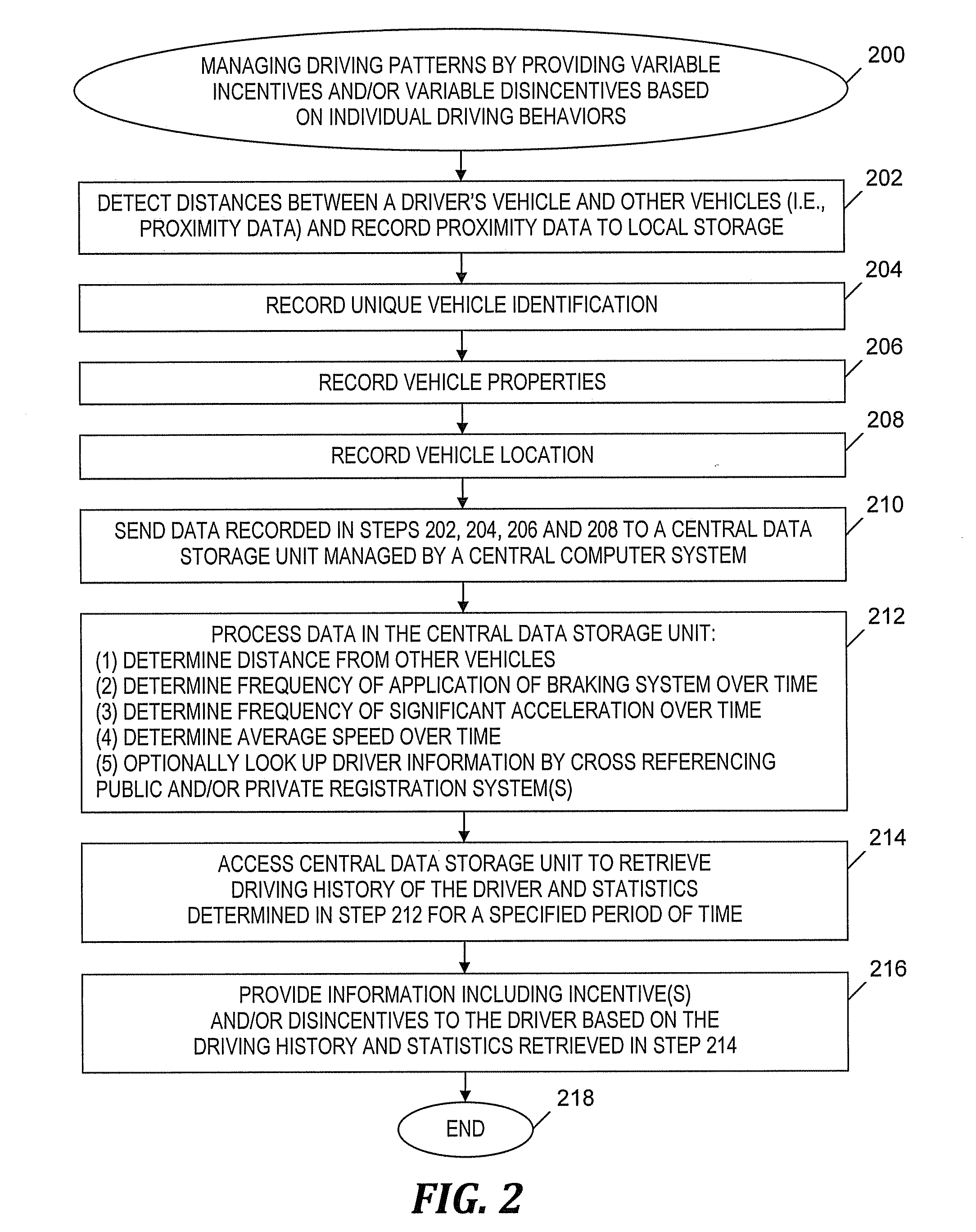Environmental stewardship based on driving behavior
a driving behavior and environmental stewardship technology, applied in the field of data processing methods and systems for advancing environmental stewardship, can solve the problems of concentrated pollution, harmful to pedestrians and others that dwell, and the highest amount of pollution in the air, so as to increase the contribution of environmental stewards
- Summary
- Abstract
- Description
- Claims
- Application Information
AI Technical Summary
Benefits of technology
Problems solved by technology
Method used
Image
Examples
Embodiment Construction
Overview
[0016]Drivers that engage in certain behaviors tend to produce more pollution. For example, tailgating tends to accentuate traffic slowdowns due to over correction of speed, which in turns causes more drivers to go through a cycle of braking and accelerating. As used herein, tailgating is defined as driving a vehicle hazardously closely behind another vehicle, so as to prevent the vehicle from easily stopping or swerving to avoid a collision with the other vehicle. This driving pattern of tailgating expends more pollution than the driver who maintains a greater, non-tailgating distance between the driver's vehicle and other vehicles, and therefore has a more steady speed and less braking and acceleration.
[0017]The present invention satisfies a need to provide information to drivers that indicates how green (i.e., environmentally beneficial) their driving techniques are and to provide recommendations regarding how to improve their driving techniques. Furthermore, in one embod...
PUM
 Login to View More
Login to View More Abstract
Description
Claims
Application Information
 Login to View More
Login to View More - R&D
- Intellectual Property
- Life Sciences
- Materials
- Tech Scout
- Unparalleled Data Quality
- Higher Quality Content
- 60% Fewer Hallucinations
Browse by: Latest US Patents, China's latest patents, Technical Efficacy Thesaurus, Application Domain, Technology Topic, Popular Technical Reports.
© 2025 PatSnap. All rights reserved.Legal|Privacy policy|Modern Slavery Act Transparency Statement|Sitemap|About US| Contact US: help@patsnap.com



